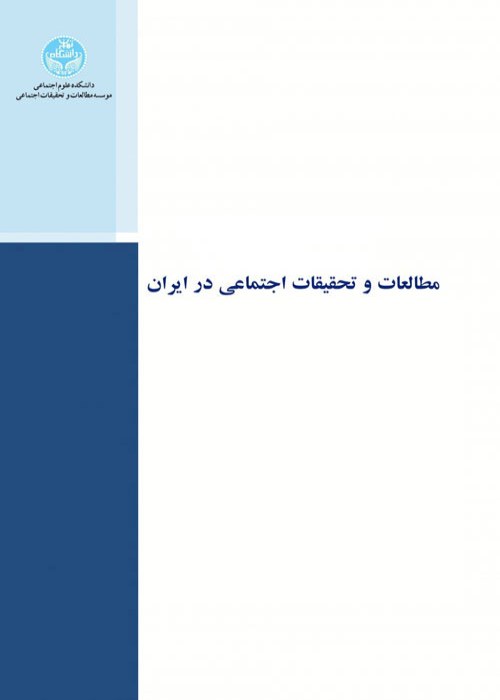Gender and Habitual Differentiation: A Comparative Study of Perception and Experience of Men and Women When Divorcing (Case Study: Tabriz)
Divorce as a social issue can cause many different issues and consequences and sometimes many other social harms at the individual and social levels. These effects and consequences can have consequences for both men and women and on the other hand for children. Divorced couples seem to have an identity crisis and do not have the ability to give meaning to life and achieve success and satisfaction in living together, and people who are determined to divorce, in the difficulty and deadlock of living together, know the final solution to solve the problem, save and re-meaning life and separation. According to what has been said, the present study tries to compare and examine the understanding of women and men in the face of divorce with an interpretive approach and to address the underlying and causal factors as well as the consequences of divorce in the lives of men and women.
The method used in this study is qualitative and based on this, grounded theory has been used as a guide for interviewing and analyzing the resulting qualitative data. The study population consists of divorced men and women living in Tabriz. According to the present method, sampling continued until a kind of theoretical and information saturation was obtained and in the process of data collection, no new information was obtained during further interviews. The number of people interviewed (sample) in this study was 32 (17 women and 15 men divorced or divorced). In the present study, in-depth interview technique was used to collect data.
According to the present study, the causal conditions in the formation of divorce are violence, infidelity and unrestrained sexual-moral burden, sexual dissatisfaction, high-risk marriages, addiction, family differences and attitudes, economic issues, early marriage. Underlying conditions such as the weakness of the education system and counseling centers before marriage and during divorce affect causal conditions. Interfering conditions in male and female divorce also included poor management and lack of personality independence, individualism, reduced divorce ugliness, normative pressures, lack of commitment and responsibility, and domination and control over the other party. Strategies used during divorce, including the support or lack of material and spiritual support of the family, the use of dowry as a lever of pressure and the non-functioning of this lever, saving, supporting or not supporting the law and hot stigma. The consequences of divorce for both men and women include reduced social relationships, the suggestion of illegitimate relationships, the formation of a single-parent family, sexual marginalization, lack of strong economic support, and depression and mental disorders.
A comparative study of the understanding of divorce between divorced men and women shows a kind of social atmosphere in which we see a kind of class-cultural distinction in the "habit of capitalism and capitalism." The habit of couples is different and different from each other and they do not have the same social status and have different economic, cultural, social and symbolic capitals. In the present study, we saw that divorce patterns are no longer influenced by the cultural norms of society, and we are somehow faced with breaking the ugliness of divorce and normalizing divorce, such as marriage in society. However, divorce, in our society, despite its ugliness and with a great impact on the lives of people, especially women, can still be considered as the last shot in the butt. Divorced people after a period of time and the emotions and shocks caused by divorce subside more rationally are able to talk about how to get married, cohabitation, the causes of divorce and its consequences, and you can use their experiences and views to understanding the reality of life and divorce benefited.
- حق عضویت دریافتی صرف حمایت از نشریات عضو و نگهداری، تکمیل و توسعه مگیران میشود.
- پرداخت حق اشتراک و دانلود مقالات اجازه بازنشر آن در سایر رسانههای چاپی و دیجیتال را به کاربر نمیدهد.



